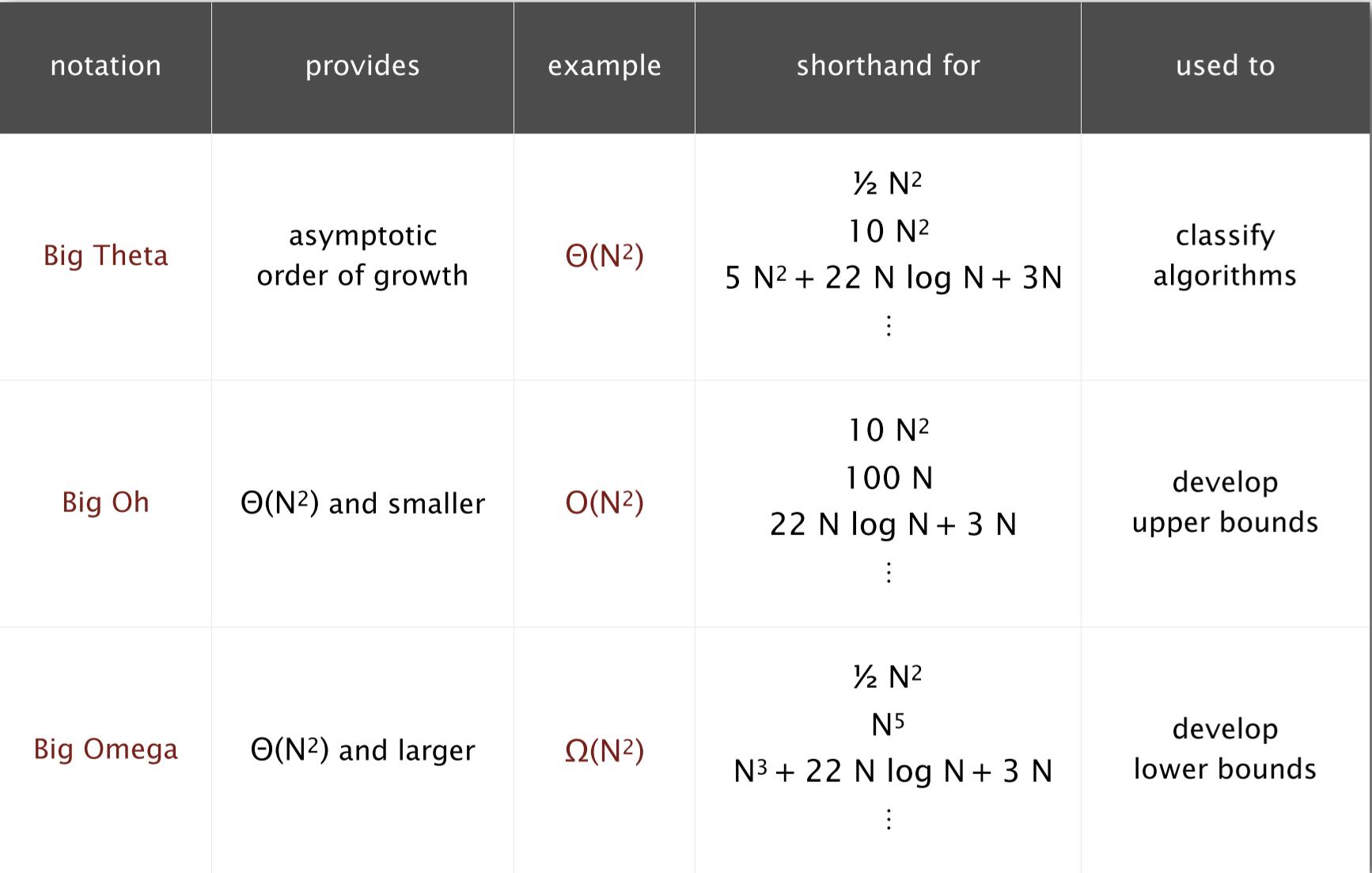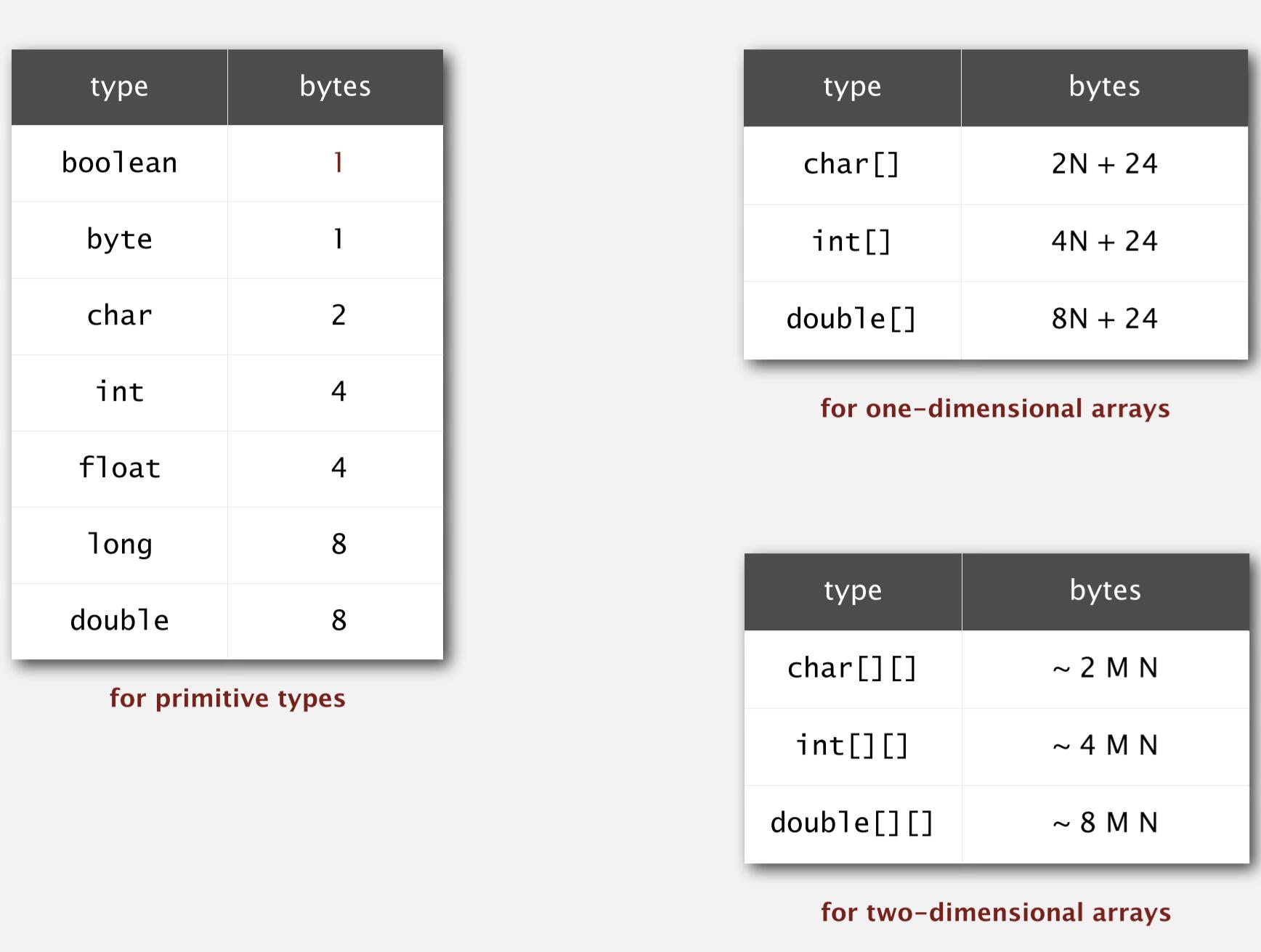
Scientific method applied to analysis of algorithms
A framework for perdicting performance and comparing algorithms.
-
Observe some feature of the natural world.
-
Hypothesize a model that is consistent with the observations.
-
Predict events using the hypothesis.
-
Verify the predictions by making further observations.
-
Validate by repeating until the hypothesis and observations agree.
Common order-of-growth classifications

Theory of algorithms
Types of analyses
Best case. Lower bound on cost.
- Determined by “easiest” input.
- Provides a goal for all inputs.
Worst case. Upper bound on cost.
- Determined by “most difficult” input.
- Provides a guarantee for all inputs.
Average case. Expected cost for random input.
- Need a model for “random” input.
- Provides a way to predict performance.
Commonly-used notations in the theory of algorithms

Theory of algorithms: example of 1-Sum
Goals.
- Establish “difficulty” of a problem and develop “optimal” algorithms.
- Ex.1-Sum=”Is there a 0 in the array”
Upper bound.
- Ex. Brute-force algorithm for 1-Sum: Look at every array entry.
- Running time of the optimal algorithm for 1-Sum is O(N)
Lower bound.
- Ex. Have to examine all N entries (any unexamined one might be 0).
- Running time of the optimal algorithm for 1-SUM is Ω(N).
Optimal algorithm.
- Lower bound equals upper bound (to within a constant factor).
- Ex. Brute-force algorithm for 1-SUM is optimal: its running time is Θ(N ).
Theory of algorithms: example of 3-Sum
Goals.
- Establish “difficulty” of a problem and develop “optimal” algorithms.
- Ex.3-Sum
Upper bound.
- Ex. Improved algorithm for 3-Sum.
- Running time of the optimal algorithm for 3-Sum is O(N^2logN )
Lower bound.
- Ex. Have to examine all N entries for 3-Sum.
- Running time of the optimal algorithm for 3-SUM is Ω(N).
Memory
Basics
- Bit. 0 or 1.
- Byte. 8 bits.
- Megabyte(MB). 1 million or 2^20 bytes.
- Gigabyte(GB). 1 billion or 2^30 bytes.
Typical memory usage for primitive types and arrays

Typical memory usage for objects in Java
- Object overhead 16 bytes.
- Reference 8 bytes.
- Padding Each object uses a multiple of 8 bytes.
Typical memory usage summary
Total memroy usage for a data type value:
- Primitive type: 4 bytes for int, 8 bytes for double, …
- Object reference: 8 bytes.
- Array: 24 bytes + memory for each array entry.
- Object: 16 bytes + memory for each instance variable + 8 bytes if inner class (for pointer to enclosing class).
- Padding: round up to multiple of 8 bytes.




近期评论